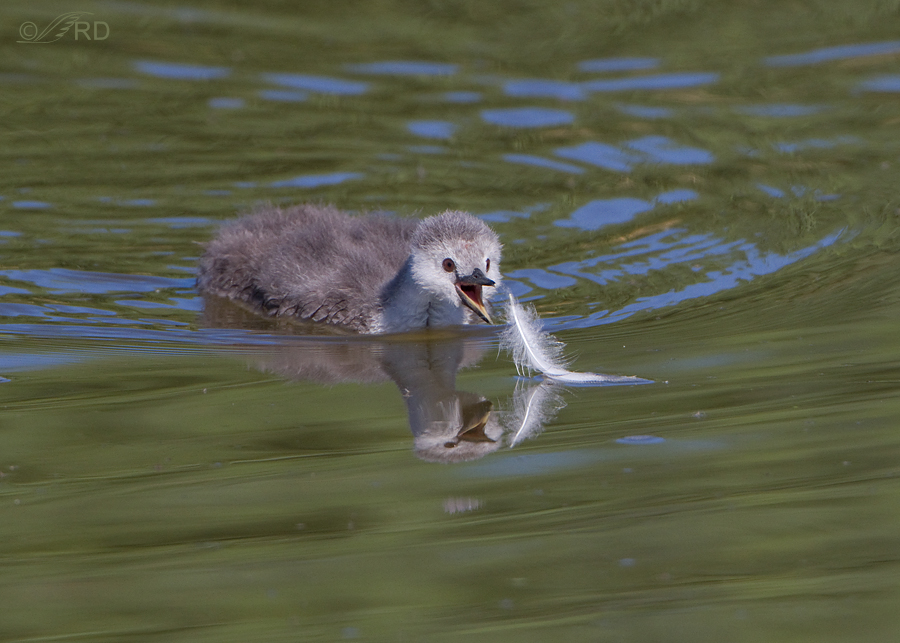Tag: feather eating
Western Grebe Chick – A Lesson Learned In Feather Eating
Most grebe species are well known for feather-eating and the Western Grebe is certainly no exception. I’ve seen and photographed them gobbling down feathers multiple times. While the purpose of such behavior remains unproven it is suspected that the feathers enable more efficient digestion of fish bones and aid in removing digestive parasites. I’ve discussed this in further detail and provided more images of the behavior here. 1/2000, f/8, ISO 500, 500 f/4, 1.4 tc The feathers on their flanks and scapulars are in almost constant molt and when grooming dislodges them they are deliberately swallowed. Often, as was the case here, the feather is floating on the surface of the water and the grebe simply snatches it up as it floats by. 1/2000, f/8, ISO 500, 500 f/4, 1.4 tc But this time the feather was fed to the chick on the back of the parent. Adults begin feeding feathers to their offspring on the first day of their lives. BNA reports that researchers have found over 300 feathers in the stomachs of individual chicks that were no more than three days old. 1/1600, f/7.1, ISO 500, 500 f/4, 1.4 tc But of course not just any old feather will do. It must be small, soft and downy and without a stiff quill but apparently this is a lesson that the chicks must learn for themselves. As soon as the youngsters begin to make occasional forays off the backs of their parents and into open water they begin to experiment with feathers they…


